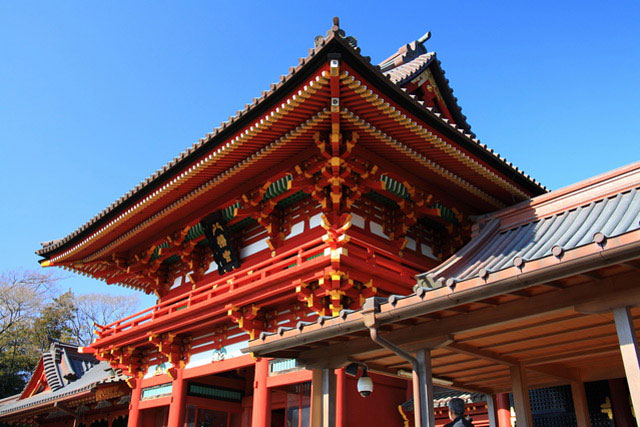
Historically and spiritually, one of the most significant scenic spots in Kamakura is Tsurugaoka Hachimangu. This shrine, which is closely associated with Minamoto no Yoritomo (the founder of the shrine and the first shogun), has for many years attracted visitors because praying here is believed to bring many benefits, such as helping to ward off evil spirits, ensuring good health, making wishes come true, helping one to find a spouse, etc. Here we introduce some of the “must-see” spots at Tsurugaoka Hachimangu.
-
01
1. History of Tsurugaoka Hachimangu
Often referred to by its alternative name of Kamakura Hachimangu, the origins of the shrine are said to date back to 1051. In that year, Minamoto no Yoriyoshi called on a deity of the Iwashimizu Hachimangu Shrine Gokokuji Temple for permission to establish a branch shrine in Yuinogo Tsurugaoka, Kamakura, to pray for his clan’s victory in the Former Nine Years War.
![]()
-
02
2) Must-see spots—The Top 5!
■Genpei-ike Pond
Beyond the San-no-Torii (the Third Torii Gate), there are two ponds that are collectively called Genpei-ike Pond, bisected by Taiko-bashi Bridge. On the right is Genji-ike Pond, and on the left is Heike-ike Pond.
Every year the pond and its surroundings show visitors the seasonal beauty of nature: cherry blossoms in spring and lotus flowers in summer.
Both ponds have man-made islands in them. Genjii-ike Pond has three and Heike-ike Pond has four. It is said that Minamoto no Yoritomo, who belonged to the Genji clan, designed the islands intending puns: three for “san” (meaning “birth” in Japanese) signifying prosperity for the Genji clan, and four for “shi” (meaning “death”) signifying the downfall of the Heike clan.![]()
■Mai-den (Dance Hall)
This building, which is located in front of the Hongu (Main Shrine) and the great stone steps, is also called Shimo-haiden (Lower Worship Hall). Before the vivid vermilion structure which draws visitors’ attention was added in the 21st century, the building was originally built of plain wood.
Many rituals take place in this hall throughout the year. Particularly popular is the ritual of Shizuka-no-mai, deriving from the festival of Shizuka Gozen, the Lady Shizuka, which is held in April, with dedicatory dances and music.![]()
■Shirahata-Jinja Shrine
This shrine is dedicated to Minamoto no Yoritomo and his son Sanetomo. Painted in black, which gives it a unique appearance, the shrine is said to answer people’s prayers for victory and academic achievement, and has for many years been visited by students hoping to do well in their exams.![]()
■The Great Gingko Tree
In the shrine, there formerly stood a giant ginkgo tree, over 1,000 years old, which was 30 m tall and had a trunk with a circumference of around 7 m. This tree had been venerated by worshippers for centuries as an important symbol of the shrine.
The Great Gingko Tree was also called the Hiding Ginkgo Tree, from a tradition that in 1219 the 3rd Minamoto shogun, Sanetomo, was assassinated under the tree by his nephew, Kugyo, who had hidden himself behind it.![]()
■Hongu (Jogu)
Climbing up the great stone steps takes you to the Great Gate and then Hongu (Jogu), or Main Shrine, located behind which leads to the Worship Hall (Haiden). The present nagare-gongen-style architecture was built in 1828 by the 11th Tokugawa shogun Tokugawa Ienari. Designated as a National Important Cultural Asset, the historical architecture must overwhelm you with its vivid colors and eye-catching decorations.![]()
-
03
3. Access to Tsurugaoka Hachimangu
The shrine is a 10-minute walk from the East Exit of Kamakura Station (JR and Enoden lines). From the East Exit, go north along the main road to reach the shrine. The most direct route into the shrine leads up the Dankazura avenue; alternatively, you can take a more roundabout route into the shrine precincts via the lively Komachi-dori Street.
![]()
- Tsurugaoka Hachimangu
-
4.0
1615 Reviews -
-
- Kanagawa Pref. Kamakurashi Yukinoshita 2-1-31
-
-
-
- 0467220315
-
-
-
- 6:00-20:30(21:00Gates shut )
-
View AllGEN HOTEL KAMAKURA
1-8-36 2F 3F Kamakura Kanagawa








 Go here
Go here










